Hey all! Real Farmer Jeff here.
Few flowers are quite as awesome and iconic as sunflowers. Not only do they bring me instant happiness, but they’re also very useful. They can draw in pollinators, produce edible seeds, and beautify the garden.
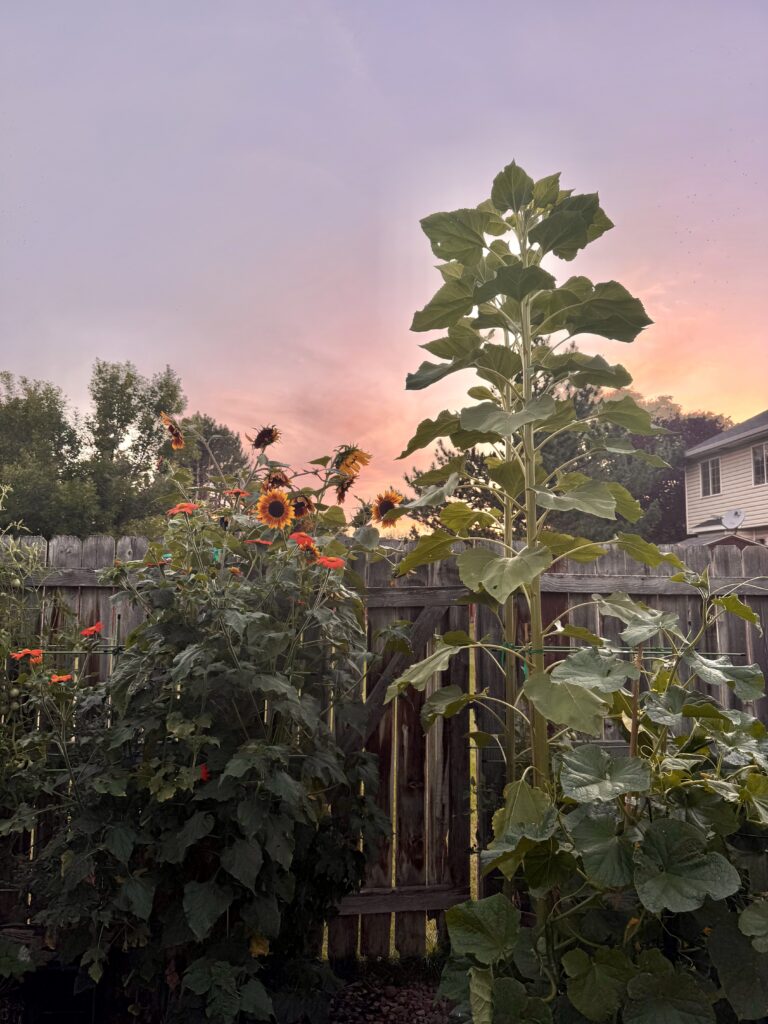
Sunflowers are deeply rooted in history, have dozens of practical uses, and are endlessly diverse in size, color, and form.
Whether you’re drawn to them for their beauty, their symbolism, or their bounty of seeds, there’s a sunflower variety for everyone.
In this blog post, we’ll explore why so many people grow sunflowers, the history behind them, the wide range of types and colors, and even how to harvest seeds for your own table. Let’s get started!
Why Do So Many People Grow Sunflowers?
Sunflowers are native to North America and were domesticated by Indigenous peoples more than 4,000 years ago for food, oil, dye, and ceremony. Spanish explorers later introduced them to Europe, where they spread widely.
In the U.S., sunflowers became popular as ornamentals in the 19th century and a major agricultural crop by the 20th century.
Today, they remain both a staple farm crop and a favorite backyard flower. They are beloved for a mix of practical and aesthetic reasons:
- Easy to grow: They thrive in most soils with little fuss.
- Pollinator magnets: Their broad blooms attract bees, butterflies, and beneficial insects.
- Versatility: Grown for beauty, cut flowers, birdseed, or human food.
- Symbolism: Often represent happiness, optimism, and resilience.
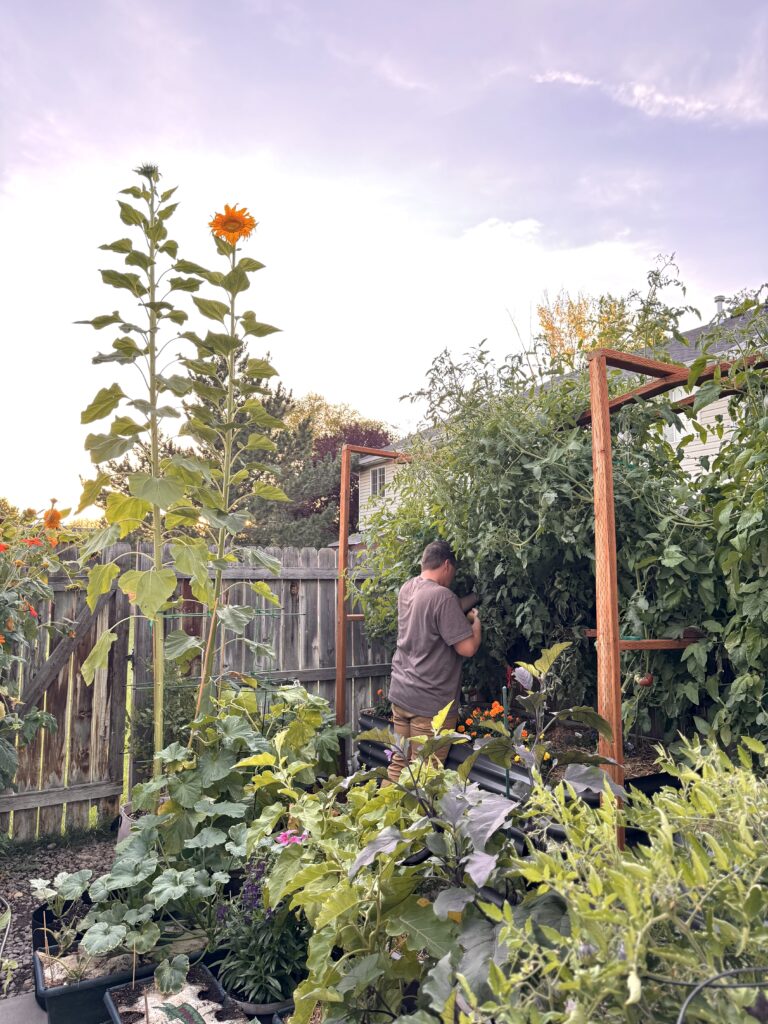
How Many Varieties Exist?
There are over 70 wild species of sunflowers (Helianthus), including familiar types like the common annual sunflower (Helianthus annuus) and Jerusalem artichoke (Helianthus tuberosus).
From these species, humans have developed hundreds of cultivated varieties (cultivars) bred for traits like height, color, or seed size.
For instance, ‘Russian Mammoth’ is grown for tall stalks and big seeds, while ‘Velvet Queen’ was bred for deep red flowers.
Species are naturally occurring sunflowers, while cultivated varieties are the domesticated forms we grow in gardens. Nearly all the showy sunflowers in seed catalogs trace back to Helianthus annuus.
These cultivars range from petite dwarfs under 2 feet to giants topping 15 feet, and come in colors from yellow and cream to red, orange, bronze, and even chocolate.
Beyond classic golden yellow, sunflowers come in:
- Pale lemon or cream (Lemon Queen, Italian White)
- Orange and bronze (Autumn Beauty)
- Red and burgundy (Velvet Queen)
- Chocolate brown (Chocolate Cherry)
- Bi-colors with red centers and yellow tips
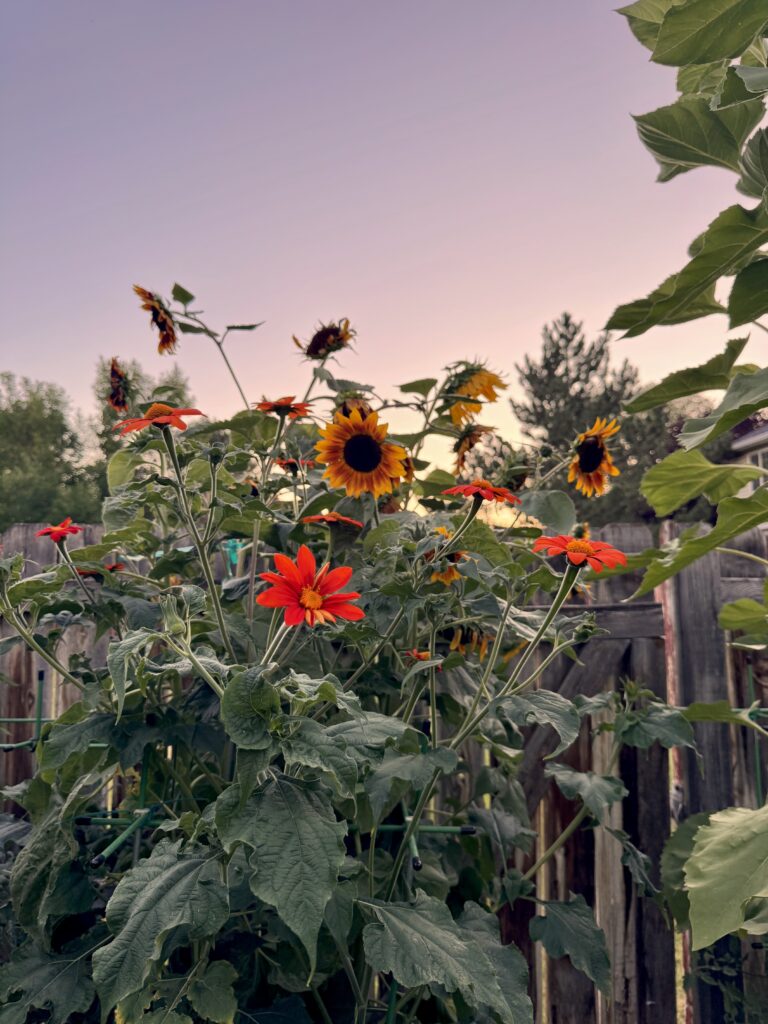
Choosing the Best Sunflower Pollinator
Sunflowers are pollinator powerhouses. Their open, nectar-rich blooms attract honeybees, native bees, bumblebees, and butterflies. Sunflower pollen even helps improve bee health. Here are my top 5 sunflowers if you’re looking for a good pollinator:
- Lemon Queen: Prolific pale blooms, central to the Great Sunflower Project.
- Mammoth Grey Stripe: Huge flowers full of nectar and later seeds.
- Autumn Beauty: Multi-colored, branching blooms.
- Velvet Queen: Rich red blooms loved by bees.
- Soraya: Many orange-gold blooms, excellent for bees and butterflies.
Sunflower Heights and Bloom Times
Sunflowers are usually grouped into three main height categories:
- Dwarf (1–3 feet):
- Bloom in 50–60 days
- Great for containers
- Common varieties: Teddy Bear, Sunspot
- Medium (4–8 feet):
- Bloom in 65–80 days
- Common branching types
- Common varieties: Soraya, Autumn Beauty
- Giants (10–15+ feet):
- 90–120 days to full maturity and seed harvest
- Impressive, seed-heavy plants
- Common varieties: Titan, Russian Mammoth
Here are some of the tallest sunflower varieties:
- Russian Mammoth: 12 – 14 feet
- American Giant Hybrid: 15+ feet
- Skyscraper: 12 – 14 feet
- Kong: Bushy and tall (12+ feet)
- Titan: Up to 2-foot-wide seed heads
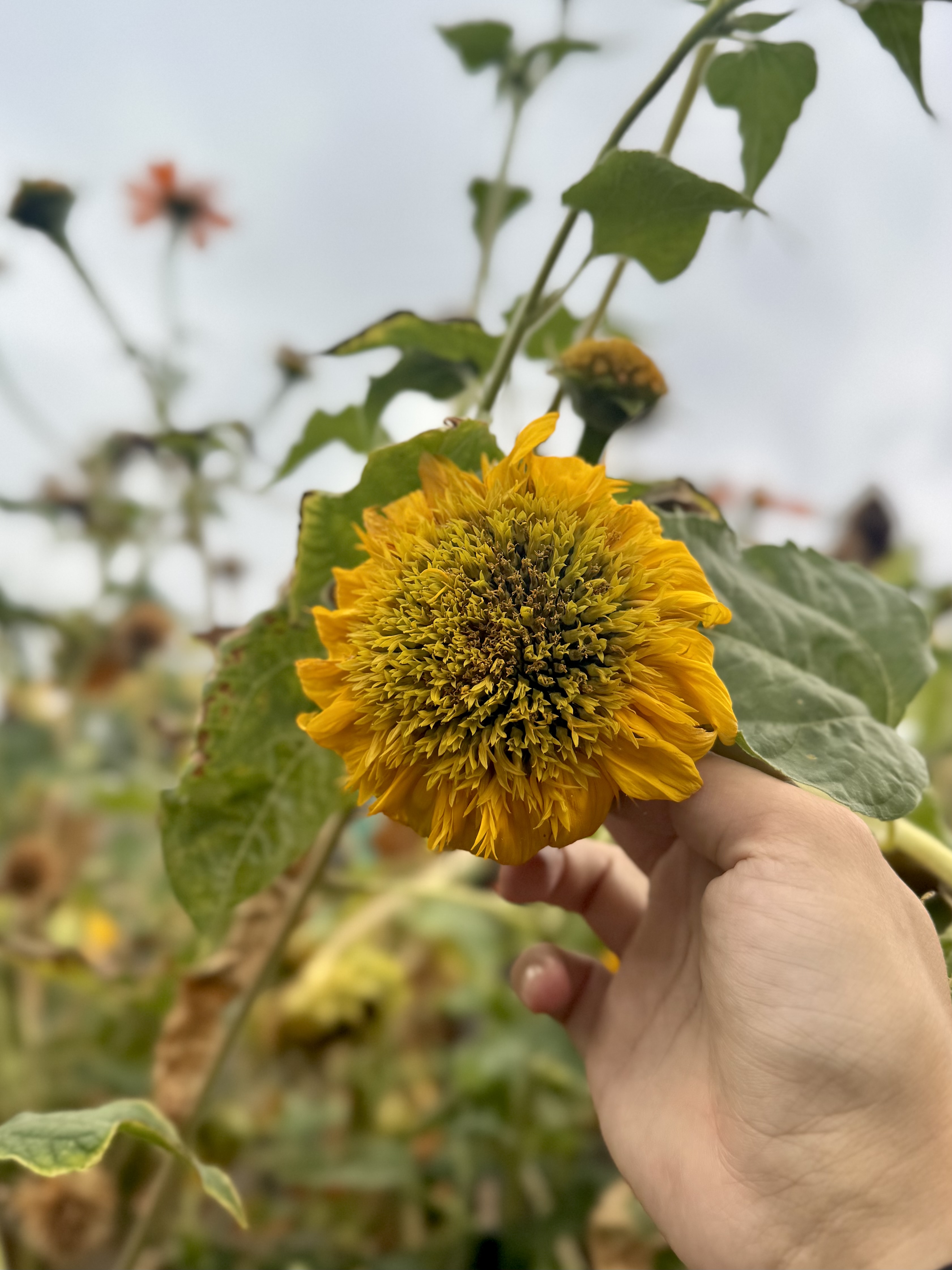
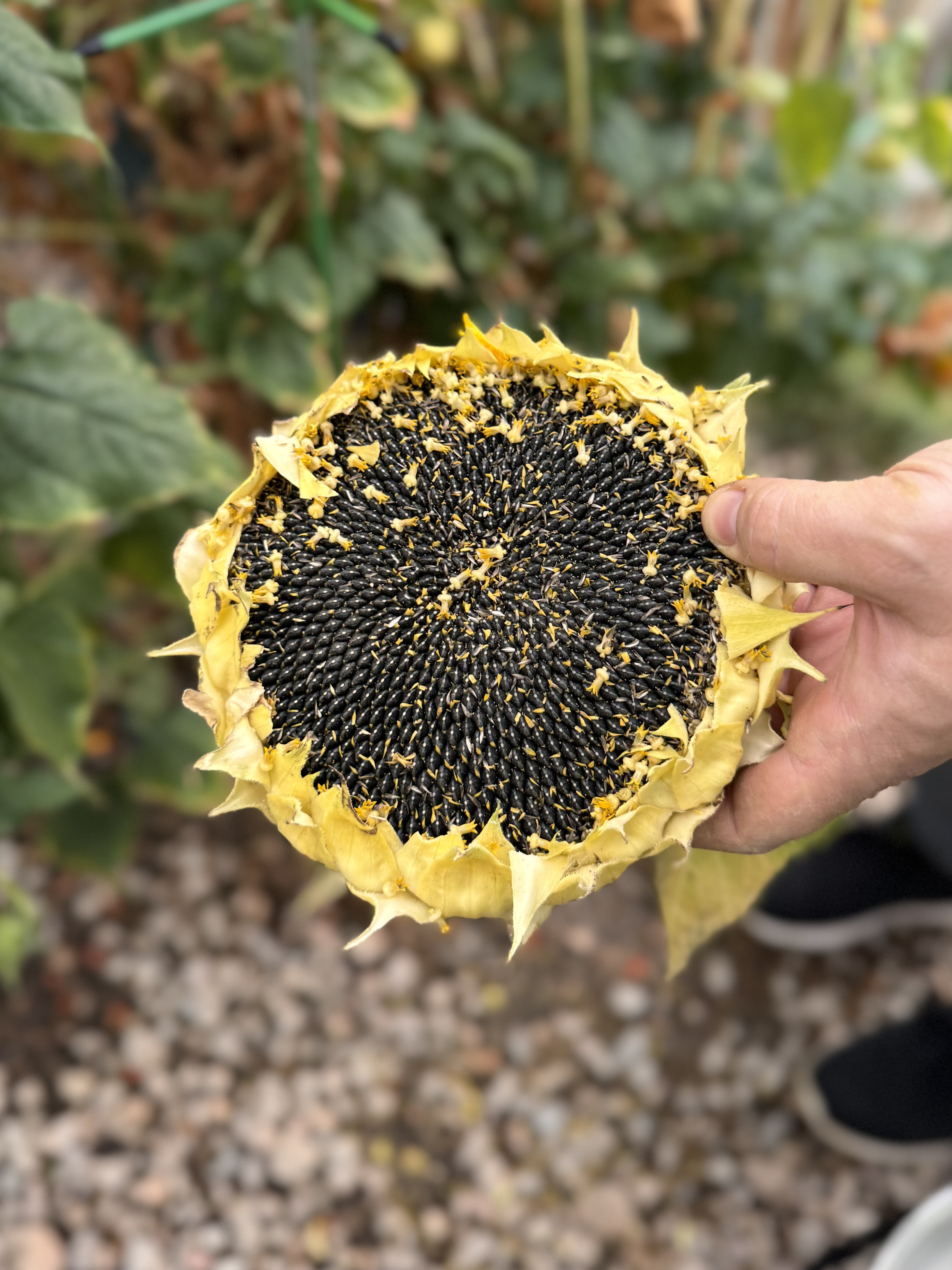
Harvesting Sunflower Seeds
Knowing when to harvest sunflower seeds ensures they are plump, flavorful, and ready to eat. Here are the key signs your seeds are ready:
- Back of the flower turns yellow or brown: The green base of the sunflower head will shift color as the seeds mature.
- Petals have dropped: Most or all of the bright yellow petals will fall off, leaving a dry, bare head.
- Seeds look full and firm: The seeds should be plump; in striped varieties, the dark and light stripes will be clearly visible.
- Seeds are hard to the touch: Gently squeeze a seed to check that it feels firm, not soft or green inside.
- Heads start to droop: Mature sunflower heads often tilt downward under the weight of their seeds.
Harvesting Tips
- Cut the head with a bit of stem: Leave 12-18 inches of stem so you can hang it upside down to dry.
- Dry the seeds properly: Hang the sunflower head in a cool, dry, and well-ventilated spot for 2-3 weeks.
- Protect from birds and pests: Cover the head with a paper bag or netting if drying outdoors. This would likely be helpful about one month after the flower blooms.
- Once the seeds are completely dry, rub or shake them out of the head and store them in a cool, dry container.
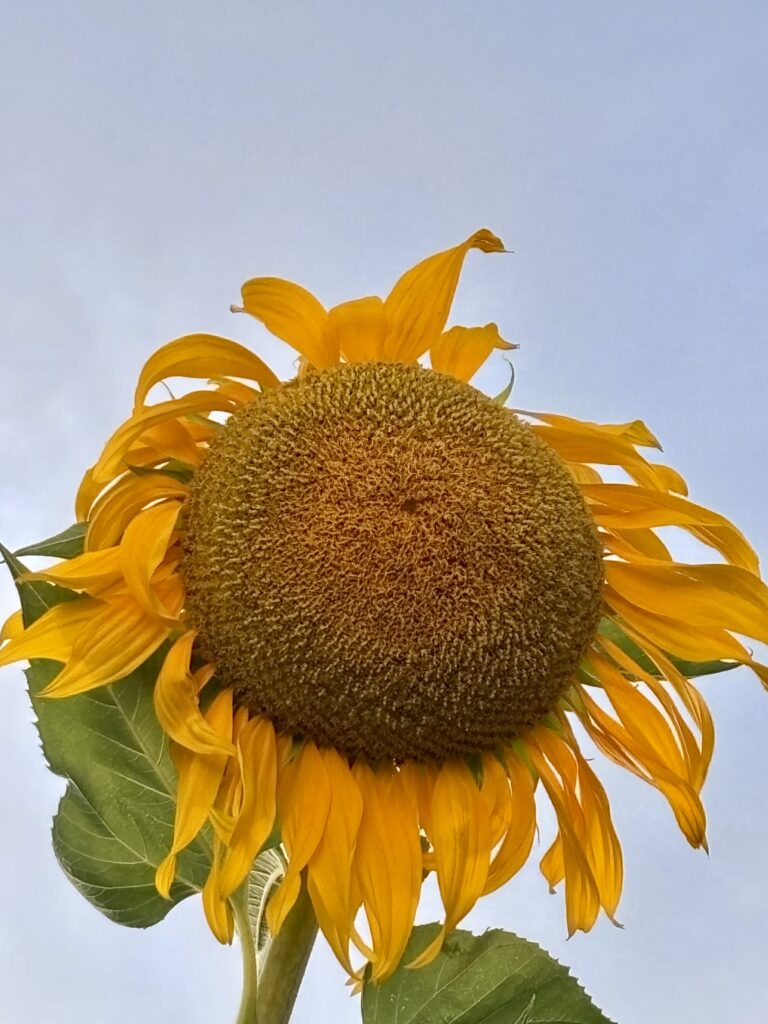
Best Sunflowers for Edible Seeds
- Mammoth Grey Stripe: Classic seed sunflower.
- Giant White Seeded: Extra-large seeds.
- Titan: Oversized seed heads.
- Snack Seed: Plump, easy-to-eat seeds.
- Super Snack Mix: Thin shells, good for roasting.
Downsides of Sunflowers
Sunflowers are rewarding, but they do have a few drawbacks:
- Shading nearby plants.
- Nutrient hogs, leaving soil depleted.
- Wind vulnerability in giants.
- Seed raiders like squirrels and birds.
- Allelopathy: Some species release compounds that inhibit other plants.
Thanks for reading along, guys!
If you enjoyed this blog post, be sure to check out my other gardening blog posts:
- How to Start a Garden on a Budget for Under $100
- Essential and Nice-to-Have Garden Products for Your Perfect Setup
- My Garden Setup: 3 Best Garden Containers for Every Gardener
- Understanding Garden Light and Shade: A Simple Guide
- How to Build a Homemade Trellis Using Cattle Panel
Be sure to follow me on social media for daily content and instructional videos about gardening!

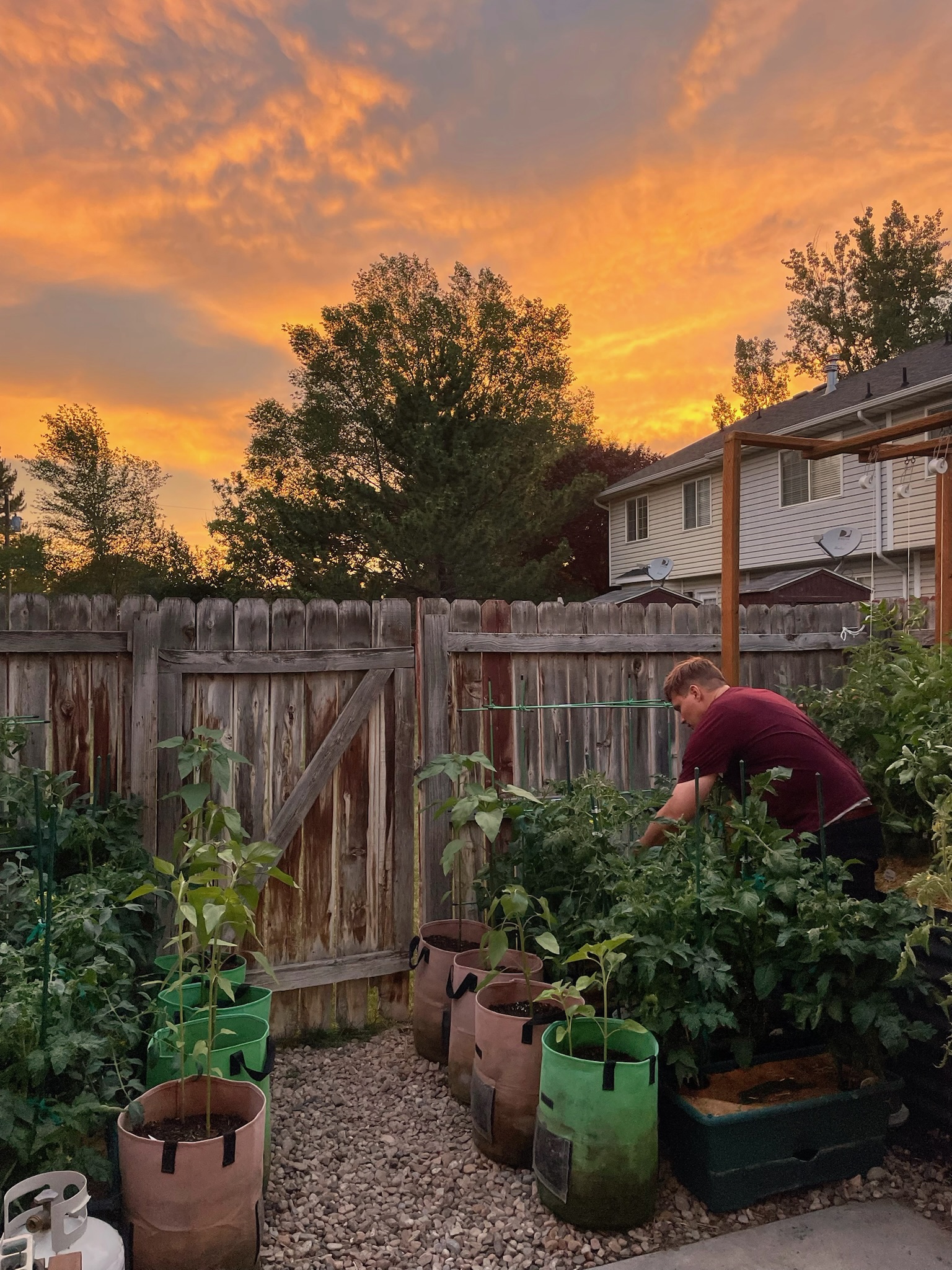





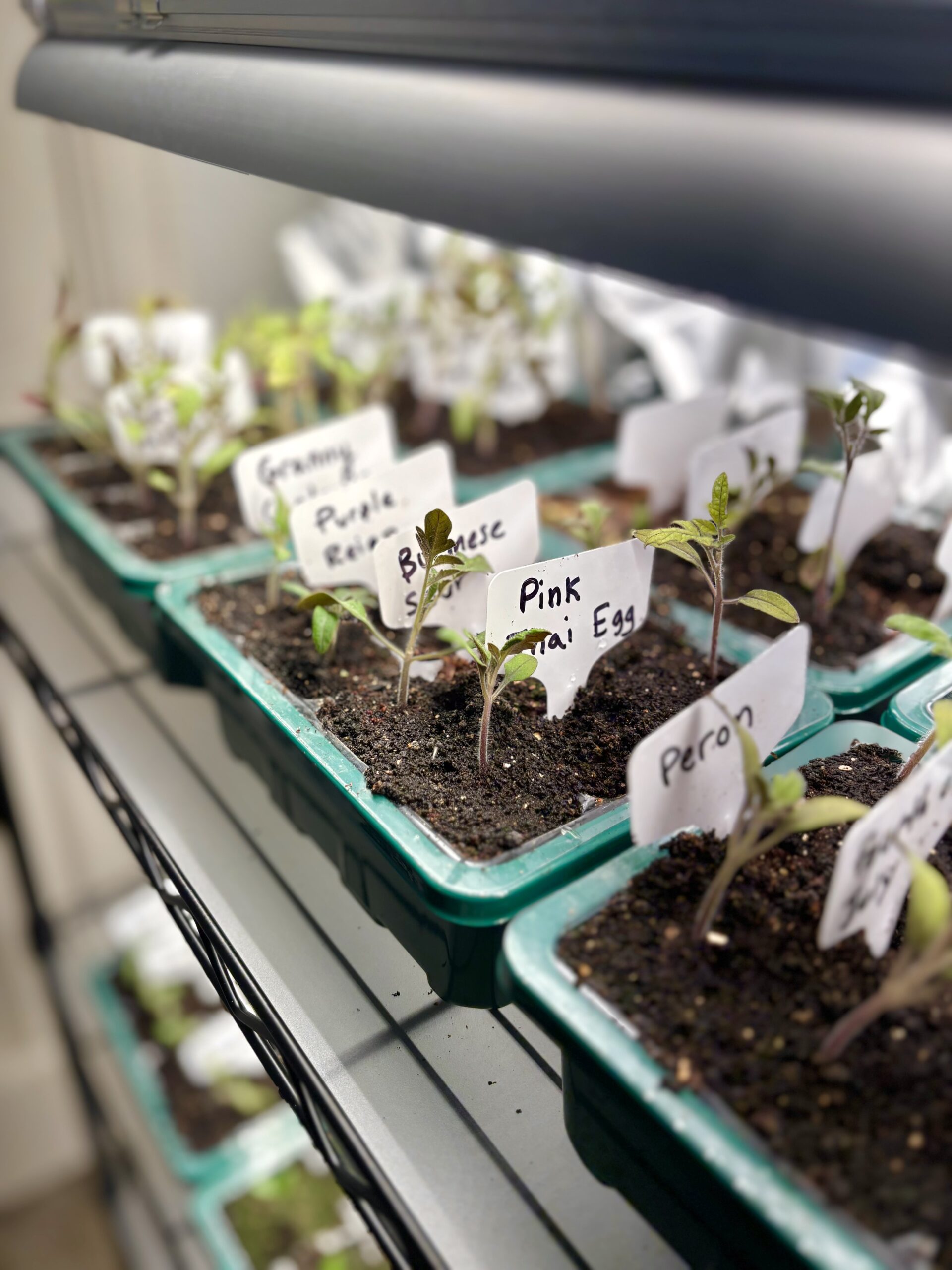
0 Comments